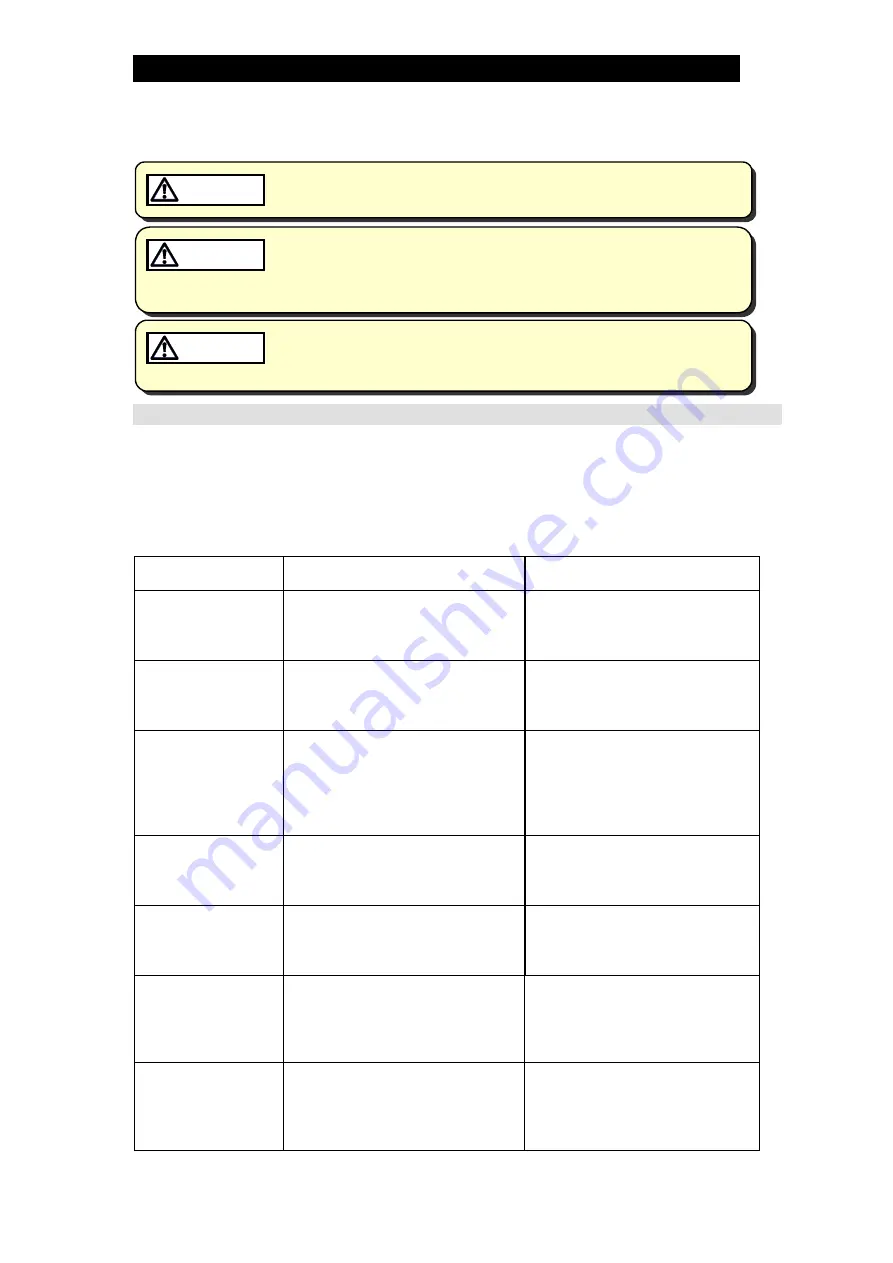
13
Maintenance
Take measures to prevent people from coming into direct contact with
product outlets. Failure to do so may result in burns or other injury from
the discharge of fluids.
CAUTION
When disassembling or removing the product, wait until the internal
pressure equals atmospheric pressure and the surface of the product
has cooled to room temperature. Disassembling or removing the
product when it is hot or under pressure may lead to discharge of fluids,
causing burns, other injuries or damage.
CAUTION
Be sure to use only the recommended components when repairing the
product, and NEVER attempt to modify the product in any way. Failure to
observe these precautions may result in damage to the product or burns
or other injury due to malfunction or the discharge of fluids.
CAUTION
Operational Check
An inspection of the following items should be done on a daily basis to determine
whether the product is operating properly or has failed. Periodically (at least
biannually) the operation should also be checked.
In the event of failure (malfunction), also refer to the "Troubleshooting" section for
remedies.
Inspection Item
Inspection Points
Remedy for Failure
(Malfunction)
Leakage from valve
(when the valve is
closed)
Visual inspection or stethoscope
inspection; is the outlet side pressure
or temperature elevated, or is there
the sound of the medium flowing?
Adjust the zero / span; if that
does not solve the problem,
replace with a new valve plug &
stem and valve seat
Leakage from gland
area
Visual inspection; is fluid leaking
from the gap between the gland
and the valve stem, or are there
signs it has leaked previously?
Coat the gland and the valve
stem with grease; if that does
not solve the problem, replace
with new V-rings
Air leakage from
actuator
Visual inspection or stethoscope
Inspection; can the sound of a
large amount of air leaking from
the actuator area or the exhaust
tap during stable actuator
operation always be heard?
Replace with a new actuator unit
Leakage from the
gaskets between
any pressurized
parts
Visual inspection; is fluid leaking
from the gasket areas on
pressurized parts?
Apply additional tightening (refer
to recommended torque) or
replace with new gaskets
Leakage from
pressurized parts
such as body and
valve bonnet
Visual inspection; is fluid leaking
from pressurized parts such as
the body or valve bonnet?
Replace any pressurized parts at
leak locations
Leakage from the
trap area
Visual inspection or stethoscope
inspection; is live steam being
discharged from the trap outlet
piping, or can the sound of a
steam leak be heard?
Clean the sealing surface of the
trap valve seat or replace the
valve seat
Operating conditions Visual inspection; does the actual
valve travel differ from the
designated operation signal value?
Readjust the air pressure
reducing valve and positioner
zero and span; if that does not
solve the problem, refer to the
"Troubleshooting" section
172-65443A-01 (CV-COS) 17 Nov 2014










































